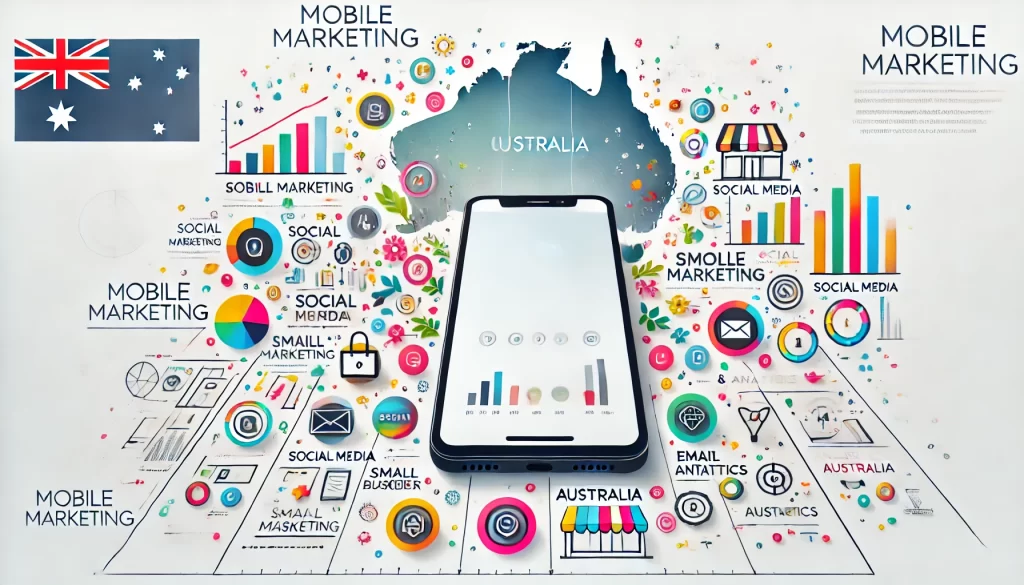Hi there & welcome to Marketing Nerd Confessions.
It’s the first edition of this newsletter, so I think it’s prudent to drop a few quick words in advance to explain how it will work.
Each fortnight, I’ll share insights, marketing techniques, hacks, and a few true stories from my time helping hundreds of businesses grow over the last eight years or so. I’ll be talking about my own brands, people I’ve interviewed for my Nerds of Business podcast and sometimes, (whilst respecting privacy) the campaigns of clients.
Often I’ll be the detached narrator of the story, sometimes the first-person hero, and occasionally even the punchline itself…
The objective is always to educate. I’ve seen some funky sh*t in my time, and I think there’s value in sharing these stories so that others may benefit from the learnings. Or put another way, I’ve made (or observed) the mistakes, so you don’t have to!
Sure, it’s great to celebrate success. And there will be some rah-rah ‘aren’t we all super clever’ case studies.
But let’s face it, failure is almost always the better teacher.
And, I’m an entertainer at heart. I’m not afraid to look a bit silly if there’s a laugh in it. We’re all imperfect, after all. In fact, my favourite writers are those who can tell a story against themselves with elan and a generosity of spirit that frequently amuses, but that never punches down.
(I also know a good ol’ car-crash is way more compelling than some bland version of events spun a million different ways to make the author look good).
So, what you’ll get from me is real. It won’t always be pretty.
But it will illuminate the points I seek to make, and most importantly of all: it will be fair. So when I’m occasionally discussing the campaigns of others (that aren’t already on the public record), here are the rules:
- Where the client name is disclosed, I have sought permission from the client in advance and full permission has been granted.
- There will be NIL discussion of current or past clients still trading, without permission.
- When discussing past clients who are no longer trading, I will refer to them as ‘Client X’ to protect privacy. In these cases, I will change key details to further obscure identities. Industries, product names, gender, and location will be mashed-up so as to be completely indecipherable.
- Honesty about my own role in things – good, bad or indifferent.
OK enough with the preamble, and on with the show…
******************************************
This tale begins half a decade ago in downtown Sydney, Australia.
And it’s the oldest story of all, a tragedy. One for the ages…
It begins, as all great tragedies do, with a sense of boundless optimism. Two co-founders come together with hope in their hearts, and dollar signs in their eyes. They hatch plans. They raise capital. They talk a big game. And soon enough they launch a startup.
I know one of the founders from a previous role. Nice guy. Digital marketing is a big part of his scale plans, so he contacts me as they emerge from stealth mode. He then engages my agency to run their lead generation campaigns and I’m genuinely chuffed to be working with Client X.
His partner walks me through the business plan. It’s sound; well researched and best of all, feasible. I’m seriously impressed by this other co-founder. He’s a data nerd, and has previously managed the operations of some large enterprises. So far, so good.
But I spy an immediate problem.
The branding is off.
Firstly, I’m not keen on the brand name. It reminds me of a TV game show (not necessarily a bad thing in the right hands).
But it’s the visual identity that’s really giving me the jitters.
The visual iconography they’re using in the logo is completely at odds with the value proposition.
Let’s just say it’s like they put a cucumber in the logo for an auto brand.
Great if you want to attract vegan hitch-hikers looking for a new car-pool solution to mitigate climate change risk. But not so good if your target market is actually carnivorous rev-heads seeking an SUV with a built-in BBQ.
Which it was (in a manner of speaking).
So, being reasonably brave with these things, I raise my concerns.
“I see this affecting the conversion rate of the landing page,” I tell them.
“Which will drive up your cost per lead, and reduce the volume of leads.
“Any chance we can get a refresh on the logo design?”
Stony silence.
“Are you saying you don’t like my logo?” asks co-founder one, giving me the eye.
Uh-oh. Looks like trouble ahead.
“Well, in my opinion, it’s giving off signals that will confuse your target market & result in a high bounce rate,” I say.
At which point co-founder one reveals the branding is actually his personal handy work.
“We’re not changing the logo,” he says, obviously offended.
“You’re a smart guy, I’m sure you can find a way to work with it.”
Gulp. I can now see he’s emotionally invested in the design. And in a battle between emotions and rationality, emotions almost always win.
Hell, there’s an entire global industry built on this principle.
It’s called ‘advertising’.
“Strip the ego out of your decision-making. Strategic marketing decisions based on ego or emotion are a stone-cold brand killer.”
So, against my better judgement (and in deference to my existing relationship with him), I agree to give it a go.
We clone one of our highest-converting landing page templates & re-skin it with their ‘cucumber-infused’ logo.
This landing page has a solid history of converting web traffic into leads at rate of 15% – 25%, over multiple previous campaigns across dozens of different brands.
So I’m thinking (hoping?) that even if this logo knocks 5 percentage points of the conversion rate, we’ll still be ok. Right?
Wrong.
A month into the campaign and we’re struggling to break 4% conversion rate, no matter what we try (and we try everything).
The landing page is a proven performer. We’re using the same audience targeting we’ve used for other campaigns, and very similar ad creatives. We’re getting good click-though rates (CTR’s) on the Google search ads.
The only variable that’s different is the logo.
I plead my case to co-founder two. He’s a data guy, surely he’ll understand?
“I see your point,” he finally offers.
“I’ve been having my own doubts about the branding.”
Hallelujah – a break through!
“But before I can support this, you need to prove beyond any doubt that the logo is the problem.”
Fair enough.
And it’s then that I have the ‘Eureka’ moment.
“What about an anonymous poll?” I ask him.
“We can use a platform called Pollfish to ask for the views of one hundred random people with no connection to business. It’s a quick way to get a real idea of what’s going on”.
It’s a small sample, and not as scientific as I’d like, but it will do.
Phew. He agrees.
We create the poll and ask the respondents what type of business they think it is, based purely on the logo. We give them six options to consider, including the correct answer and my hypothesis of how they are actually perceiving the brand, ‘a car pool solution for vegans’.
Twenty-four hours later, I have the results.
Less than 10 per cent choose the answer that most accurately describes what the business really does.
But 63 per cent of respondents choose the answer ‘car pool solution for vegans’
Vindicated (and trying hard not to look smug), I sit down with the founders to present the findings.
They are shocked. But to their credit, they agree that something needs to change.
“Leave it with us for a few days”, they say.
The following week an email hits my inbox entitled ‘New logo design’. I immediately click to open it, curious to see the direction in which they’ve taken the brand identity.
Oh no.
Dear God, anything but that…
It’s from co-founder one. He’s doubled-down on the original design. The size of the cucumber is now even bigger!
I kid you not.
There’s now a massive cucumber emerging from the bonnet of the car icon. It’s the original logo on steroids.
Or rather, very, very strong plant fertilizer.
I take a few moment to collect my thoughts. It seems pretty clear, I’m caught in a bizarre love triangle.
It’s me or the logo.
So I do what any self-respecting marketer would do; I beg.
I politely explain that the data doesn’t lie, and that pretty-please can we just try a different test logo for a while and see what happens? Because it would be very distressing, but unless we can all agree to resolve the logo issue, then, regrettably, we might have to part ways.
They sack me.
I feel a strange mix of disappointment & relief.
I never did see them again, but out of a morbid curiosity I kept tabs on their progress.
I was sad (though not surprised) to learn that about nine months later they had gone completely out of business.
A tragic end to what had been a very promising venture.
*****************************************
Although the details have been changed to protect identities (and to provide some additional comedic effect) this story is 100 per cent true.
So what can we learn from this ‘horror show’?
1. Branding matters.
The poor visual identity was proven to have a material effect on the conversion rate. Studies show a landing page has 2.86 seconds to convince a user they’re in the right place before they bounce off forever. So pay a consultant or agency to get your branding right, it’s that important.
2. Strip ego & emotion out of your decision making.
This issue is more common in founder-led start ups and family-run businesses. I see it much less in larger businesses with more management, and better resources. Nevertheless, strategic decisions based on ego or emotion – or worse still, on notions of ‘identity’ – are a stone-cold brand killer.
3. Listen to your advisers.
If your advisers are otherwise competent, rational humans then listen to their advice; there’s a good chance they know what they’re talking about. I’m not saying you must follow what they say without question, but to ignore them is often folly. Especially when they have the numbers on their side….
4. Don’t ignore ‘the data’ – whatever you do.
In the age of data analytics, one way or another it’s usually possible to prove (or disprove) a hypothesis beyond any doubt. If your agency, staff member, or consultant has ‘the data’ to back up what they’re saying, then ignore that at your peril.
As we saw in the story above, this can be especially lethal.
Til next time, Darren
PS: yes music fans, the New Order reference was deliberate 🙂









